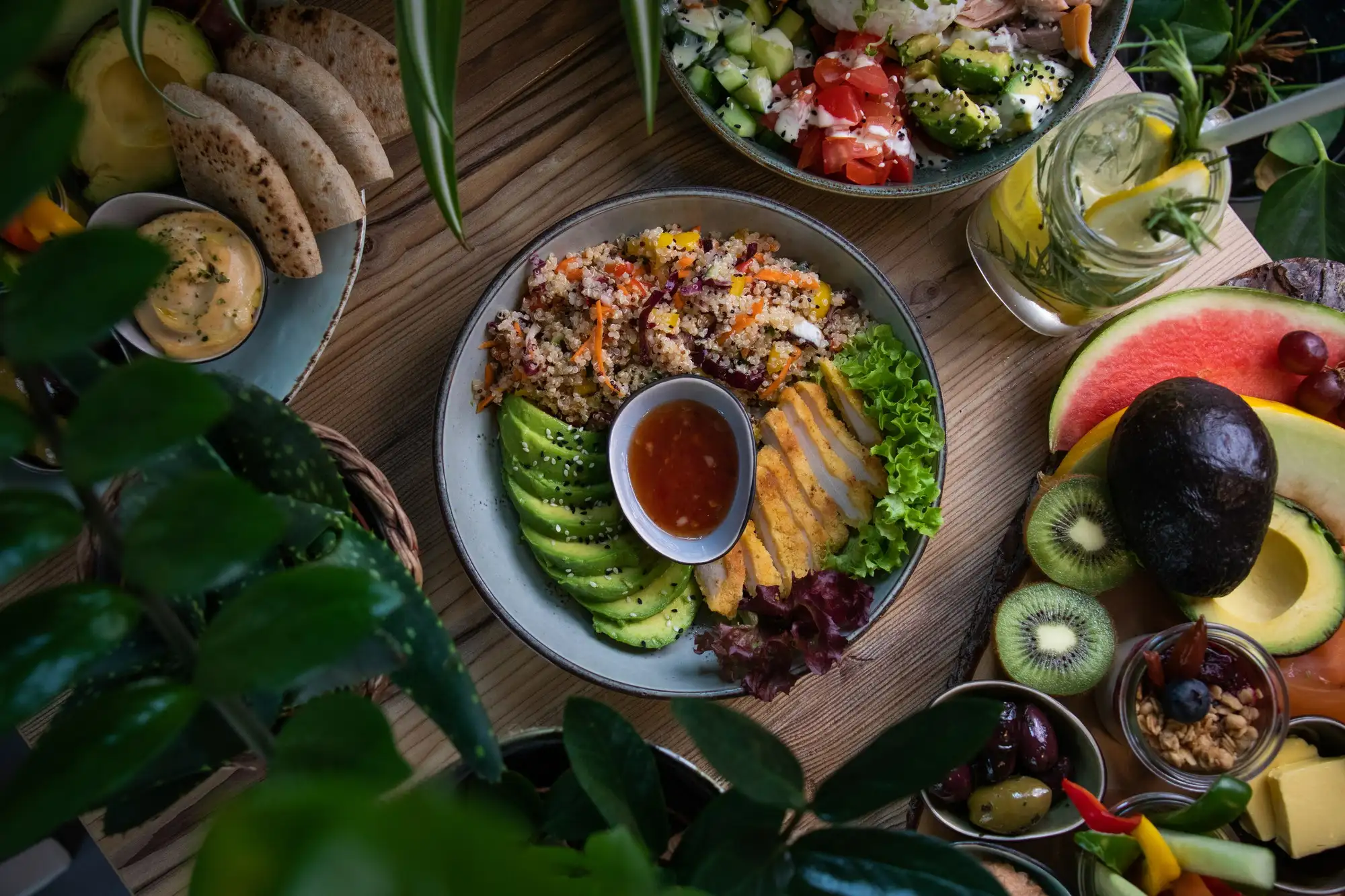Is Mustard Good For You? Unveiling the Health Benefits & Nutritional Value
For centuries, mustard has reigned supreme as a condiment, adding a vibrant kick to hot dogs, pretzels, and countless other culinary creations. But beyond its flavor-boosting power, whispers of potential health benefits have been swirling around this zesty spread. So, the question begs to be asked: Is Mustard Good For You? The answer, like a good dollop of Dijon, is both complex and flavorful. Mustard, a paste made from crushed mustard seeds, comes in a surprising variety, each boasting its unique taste and, potentially, a range of health perks.
From the classic yellow mustard gracing your backyard barbecues to the robust brown mustards favored by chefs, the advantages of mustard seeds are countless. It offers a spectrum of tastes and potentials waiting to be explored.
Types of Mustard, Its Caloric and Nutritional Facts
Mustard’s flavor profile may be diverse, but did you know its nutritional content can vary depending on the type you choose? Let’s embark on a journey through the most common mustard varieties, exploring their unique nutrient compositions:
Yellow Mustard (American Mustard)
Yellow mustard, commonly known as American mustard, is the most widely recognized type of mustard in the United States. It is characterized by its bright yellow color, which comes from the addition of turmeric. This type of mustard has a smooth texture and a mild flavor, making it a favorite for everyday use.
Flavor: Mild and tangy
Ingredients: Yellow mustard seeds, vinegar, water, salt, and turmeric (which gives it the bright yellow color)
Uses: Popular on sandwiches, hot dogs, and as a base for salad dressings and marinades.
Nutritional Value 1 tablespoon (approximately 15 grams):
- Calories: 9
- Fat: 0.5g
- Saturated Fat: 0g
- Carbohydrates: 0.5g
- Sugars: 0g
- Protein: 0.5g
- Fiber: 0g
- Sodium: 55mg
Whole Grain Mustard
Whole grain mustard is made with whole or partially ground mustard seeds, which give it a coarse texture. This type of mustard often contains visible mustard seeds and is known for its robust flavor and crunchy texture. It is a favorite in many European cuisines and is often used to add depth and texture to dishes.
Flavor: Tangy and slightly spicy with a robust texture
Ingredients: Whole mustard seeds (often brown or black), vinegar, water, and salt
Uses: Great for adding texture to dishes, as a spread on meats, and in salad dressings and sauces.
Nutritional Value 1 tablespoon (approximately 15 grams):
- Calories: 20
- Fat: 1g
- Saturated Fat: 0.1g
- Carbohydrates: 1g
- Sugars: 0g
- Protein: 1g
- Fiber: 1g
- Sodium: 180mg
Spicy Brown Mustard
Spicy brown mustard, also known as deli mustard, is a coarser and spicier version of yellow mustard. It is made with brown mustard seeds and is less finely ground, giving it a robust flavor and a hearty texture. This type of mustard is a staple in American delis and pairs well with a variety of meats and sandwiches.
Flavor: Coarse, robust, and spicy
Ingredients: Brown mustard seeds, vinegar, water, salt, and sometimes turmeric
Uses: Commonly used on deli sandwiches, with sausages, and in robust marinades and sauces.
Nutritional Value 1 tablespoon (approximately 15 grams):
- Calories: 10
- Fat: 0.5g
- Saturated Fat: 0g
- Carbohydrates: 1g
- Sugars: 0g
- Protein: 0.5g
- Fiber: 0g
- Sodium: 120mg
English Mustard
English mustard is known for its intense heat and sharp flavor. It is traditionally made with a mix of yellow and brown mustard seeds, which gives it a strong, pungent taste. English mustard is often used in British cuisine to add a spicy kick to meats and savory dishes.
Flavor: Very hot and pungent
Ingredients: A mix of yellow and brown mustard seeds, flour, and turmeric
Uses: Traditional accompaniment to roast beef and other meats, as well as in various British recipes.
Nutritional Value 1 tablespoon (approximately 15 grams):
- Calories: 15
- Fat: 0.8g
- Saturated Fat: 0.1g
- Carbohydrates: 0.8g
- Sugars: 0.1g
- Protein: 0.8g
- Fiber: 0.4g
- Sodium: 125mg
Honey Mustard
Honey mustard is a sweet and tangy variation of mustard that combines the spiciness of mustard with the sweetness of honey. This type of mustard is smooth and creamy, making it a popular choice for dressings, dips, and glazes. It is especially loved for its versatility and the balance it brings to savory dishes.
Flavor: Sweet and tangy
Ingredients: A blend of mustard Yellow Mustard and Honey, sometimes with added vinegar and spices
Uses: Ideal for salad dressings, dipping sauces, and as a glaze for meats.
Nutritional Value 1 tablespoon (approximately 15 grams):
- Calories: 45
- Fat: 0.3g
- Saturated Fat: 0g
- Carbohydrates: 11g
- Sugars: 9g
- Protein: 0.3g
- Fiber: 0.2g
- Sodium: 135mg
German Mustard
German mustard varies widely by region, with some types being sweet and mild, while others are hot and spicy. It often features a mix of mustard seeds and is known for its complex flavor profile. German mustard is an essential condiment in German cuisine and pairs perfectly with traditional foods like sausages and pretzels.
Flavor: Can range from mild and sweet to hot and spicy
Ingredients: Varies by region, often includes a mix of mustard seeds, vinegar, and a variety of spices
Uses: Commonly paired with sausages, pretzels, and other traditional German dishes.
Nutritional Value 1 tablespoon (approximately 15 grams):
- Calories: 15
- Fat: 1g
- Saturated Fat: 0.1g
- Carbohydrates: 1g
- Sugars: 0.1g
- Protein: 1g
- Fiber: 0.5g
- Sodium: 120mg
Hot Mustard (Chinese Mustard)
Hot mustard, commonly known as Chinese mustard, is known for its sharp and fiery taste. It is made by mixing mustard powder with water, which releases the mustard’s heat. This type of mustard is often served as a dipping sauce in Chinese cuisine and adds a powerful kick to appetizers and dishes.
Flavor: Very hot and sharp
Ingredients: Ground brown or black mustard seeds mixed with water (sometimes vinegar)
Uses: Popular in Chinese cuisine, often served as a condiment with egg rolls, dumplings, and other appetizers.
Nutritional Value 1 tablespoon (approximately 15 grams):
- Calories: 15
- Fat: 0.5g
- Saturated Fat: 0g
- Carbohydrates: 1g
- Sugars: 0g
- Protein: 0.5g
- Fiber: 0.5g
- Sodium: 65mg
Health Benefits of Mustard Seed
Mustard isn’t just a flavor bomb; it might be a hidden gem in the world of health-supportive condiments! While research is ongoing to fully understand its properties, studies suggest mustard consumption might offer a range of potential benefits for your well-being. Let’s explore some of the most promising areas:
Improve Digestive System
Mustard seeds are a good source of fiber, which plays a crucial role in digestion. Fiber helps regulate bowel movements, promotes gut health, and can contribute to feelings of fullness. Additionally, some studies suggest that certain compounds in mustard, like allyl isothiocyanate (AITC), may have digestive enzyme-stimulating properties.
Heart Health
Research has explored that mustard oil can positively impact the plasma lipid profile and reduce total cholesterol, and non-HDL cholesterol levels while increasing HDL cholesterol.
Blood Sugar Management
Mustard consumption may have a positive impact on blood sugar management. This is particularly interesting for those managing diabetes or prediabetes. The potential mechanism behind this benefit might be related to compounds in mustard that can help regulate blood sugar levels after a meal.
Anti-inflammatory Potential
Chronic inflammation is linked to various health concerns. The allyl isothiocyanate (AITC) found in mustard seeds possesses potential anti-inflammatory properties. Mustard consumption might offer some support in managing inflammation.
Good For Respiratory System
Studies suggest that mustard seeds might offer some relief from respiratory issues like congestion. This potential benefit may be due to the decongestant properties of certain mustard seed compounds.
Remember: It’s important to consult with a healthcare professional before significantly increasing your mustard intake, especially if you have any underlying health conditions or are taking medications.
Is Mustard Good For You? Potential Downsides and Considerations Of Mustard
While mustard offers a treasure trove of potential health benefits, it’s important to consider all aspects before incorporating it liberally into your diet. Here’s a look at some potential downsides and considerations to keep in mind:
Sodium Surprise
One potential drawback of mustard, particularly for some varieties, is its sodium content. While mustard seeds themselves are naturally low in sodium, some mustards, especially yellow mustards, can be loaded with added sodium during processing. This can be a concern for individuals with high blood pressure or those advised to limit their sodium intake.
Spice Sensitivity
The fiery kick of some mustards, particularly brown mustards with added chilies or horseradish, might not be suitable for everyone. If you have a sensitive stomach or experience heartburn easily, it’s best to choose milder mustard varieties or limit your intake.
Allergic Reactions
Although less common, mustard allergies can occur. Symptoms can range from mild skin irritation to more severe reactions like anaphylaxis. If you experience any adverse reactions after consuming mustard, discontinue consumption and consult a healthcare professional.
Medication Interactions
Certain medications, like blood thinners, might interact with mustard. It’s crucial to consult with your doctor before significantly increasing your mustard intake if you’re taking any medications.
Additional Tips
Here are some tips to enjoy the benefits of mustard while keeping potential downsides in mind:
-
Read Labels Carefully: Pay attention to the sodium content when choosing mustard varieties. Opt for low-sodium or sodium-free options whenever possible.
-
Start Slow: If you’re new to mustard, begin with a small amount and gradually increase your intake as tolerated. This allows your body to adjust and helps identify any potential sensitivities.
-
Explore Variety: The world of mustard offers a spectrum of flavors. Experiment with different types to find ones that suit your taste preferences and potentially offer specific health benefits (e.g., brown mustard for anti-inflammatory support).
-
Portion Control is Key: Even healthy foods can be enjoyed in excess. Use mustard strategically to enhance flavor, but be mindful of portion sizes.
Mustard Seed Uses: Creative Culinary Applications
Mustard’s potential goes far beyond the humble hot dog. This versatile condiment can be a flavor powerhouse in your kitchen, adding depth and complexity to a variety of dishes. Let’s explore some creative ways to incorporate mustard into your culinary creations:
Marinade Marvel
Mustard’s unique enzymes can work wonders when tenderizing meats and infusing them with flavor. Whip up a marinade using your favorite mustard (Dijon or brown mustard work well) combined with olive oil, herbs, and spices for chicken, fish, or even tofu.
Salad Dressing
Ditch the store-bought dressings and create a healthy and flavorful salad dressing starring mustard! Combine Dijon mustard with olive oil, lemon juice, honey, and a touch of garlic for a tangy and delicious vinaigrette. For a creamy option, blend Dijon mustard with Greek yogurt, fresh herbs, and a squeeze of lemon.
Dipping Delight
Mustard elevates dips from ordinary to extraordinary. Whip up a simple whole-wheat pita bread and veggie platter with a creamy whole-grain mustard dip made by combining Dijon mustard with plain Greek yogurt, chopped fresh dill, and a squeeze of lemon.
Sauce Sensational
Mustard can add a depth of flavor to sauces for pasta, meat, or vegetables. Try creating a creamy pan sauce for chicken by deglazing the pan with white wine, adding Dijon mustard, and whisking in some heavy cream for a quick and decadent sauce.
Soup Savior
A dollop of mustard can add a surprising and delightful kick to creamy soups. Stir in a teaspoon of Dijon mustard to your next bowl of potato or broccoli cheddar soup for a flavor twist that complements the creaminess perfectly.
Beyond the Plate
Mustard’s versatility extends beyond the kitchen! Did you know that some mustards, particularly brown mustard varieties, can be used as a natural cleaning agent with potential antibacterial properties? Dilute a small amount of brown mustard with water and use it to clean surfaces, always testing in an inconspicuous area first.
Conclusion
Our journey through the fascinating world of mustard has reached its end, but hopefully, your exploration is just beginning! We’ve delved into the vibrant spectrum of mustard varieties, unveiled their unique nutritional profiles, and explored the exciting science behind their potential health benefits. We’ve also navigated potential downsides and considerations, empowering you to enjoy mustard responsibly.
Here are some key takeaways to remember:
-
Mustard offers a variety of flavors and textures, catering to different palates and culinary applications.
-
Beyond its iconic yellow hue, mustard boasts a diverse range of types, each with its own potential health benefits.
-
Mustard generally packs a low-calorie and fat-free punch, making it a guilt-free condiment choice for health-conscious individuals.
-
Research suggests that mustard consumption might play a role in promoting digestion, heart health, blood sugar management, and potentially even offer anti-inflammatory and respiratory support.
Share this content:














Post Comment